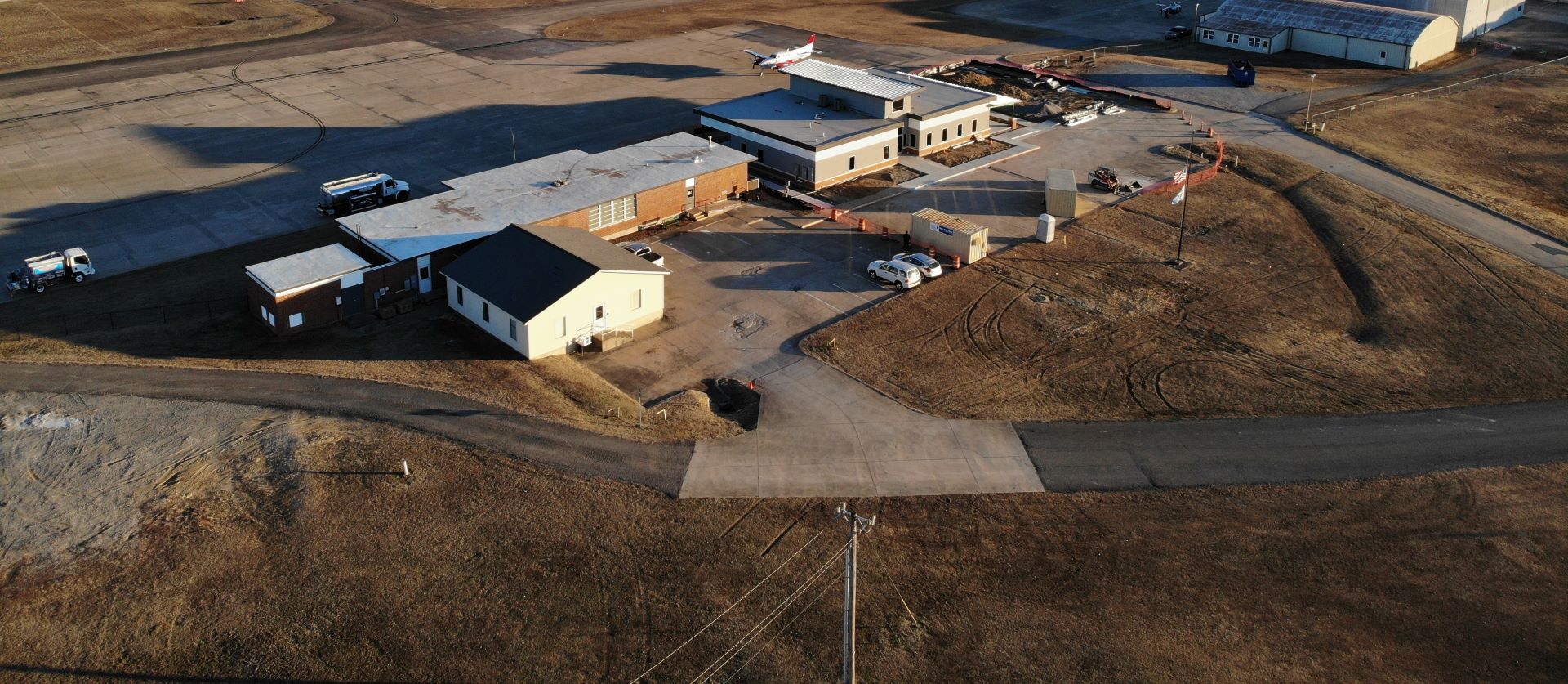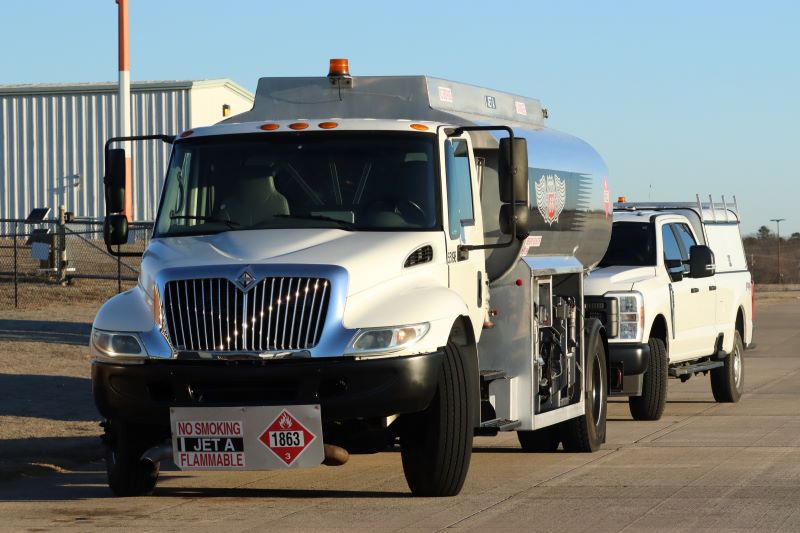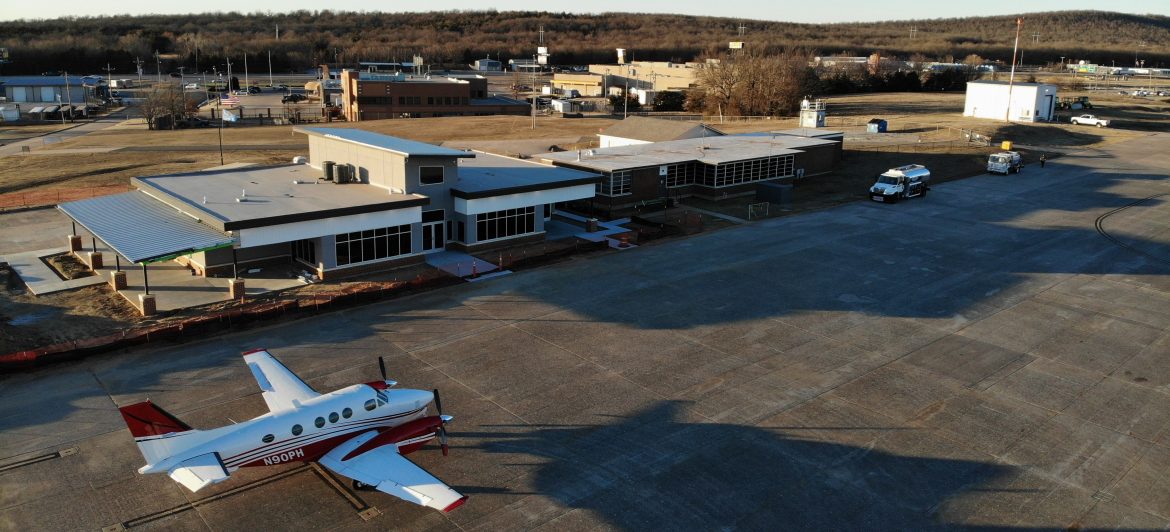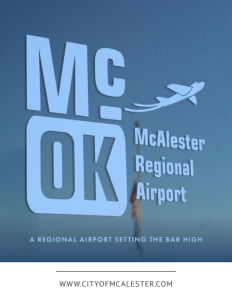A Regional Airport Setting the Bar High
With an impressive focus on flight training, tourism, and economic development, this airport is a gem in Southeast Oklahoma
“I am big on customer service and it doesn’t matter if someone flies in here in a Piper Cub or a G6, they are going to get the exact same service and this is how we run our business here.”
These words spoken by Chase Tindle, Airport Manager with McAlester Regional Airport best encompass the enthusiasm and top-level flight services that this gem of an airport offers the flying public.
Based on the outskirts of the city of McAlester, surrounded by the natural beauty of the area within the great state of Oklahoma, McAlester Regional Airport has worked hard to increase its profile and has a lot to be proud of, due in part to the determination and vision that Tindle has brought to his job overseeing airport operations.
“We are a General Aviation airport according to the FAA and we represent a regional business airport within the Oklahoma airport system,” Tindle begins.
Averaging about 9000 operations a year with plans to systematically grow these operations over the next few years, McAlester Regional Airport has been in operation since 1950. During the ensuing decades much has transformed at this economic aviation hub.
“In the past, we have had a central air service. Back in the 50’s through the early 80’s, we did have passenger service that was often a daily service,” Tindle recalls. “This service was discontinued back in the early 80s and we also had a flight service facility based here through the 60s until 2007 that served the area.”
The airport itself is owned by the city of McAlester and represents the only jet-capable airport within a 50-nautical-mile radius.
“Our location serves regional business and travel very well,” Tindle states.

Training the Next Generation to Fly High
“40% of the traffic out here at the airport is actually flight training,” Tindle notes when discussing the airport’s capabilities and assets.
“Flight training happens at the airport both local training and then we have a lot of folks from the Tulsa metro area that fly down here and utilize the airport for their flight training,” he elaborates.
In terms of the remaining percentage of business, Tindle points to approximately 30% of the traffic relating to recreational and personal flights touching down at the airport. The remaining 30% is made up of business and corporate aviation serving both local employers and businesses based in the area.
Tindle speaks enthusiastically about the benefits to the airport as the city has become its Fixed Based Operator (FBO).
“We took over the FBO from a private individual almost two years ago now,” he explains. “That has been good for us. Our previous provider did a wonderful job but it is nice to have direct control over the services provided and the experience that those passengers and pilots are getting.”
Tindle also draws attention to the additional revenue brought in with fuel sales. “All that money is going back into growing the airport.”
When it comes to flight training, McAlester Regional has gone the extra mile in light of the current labor shortages facing the airline industry as a whole.
“I worked at this airport in high school pumping gas and sweeping hangars. It’s been amazing to be able to come back and run the facility that I started my career at as a young kid,” Tindle reflects. “Within two months of starting at the airport, the school district reached out and said they had an aviation program and are looking for somebody who knows it intimately to be able to teach it.”
Tindle spoke with the city regarding the opportunity and together the airport and school district formed a great working partnership that continues today. As Tindle highlights, the program has gained further interest and popularity with students eager to learn about aviation.
“I teach a class at the high school every day. I have taught two different classes over my tenure and I currently teach one class. I am in my fourth year now.”
The first class that Tindle taught was a junior-level class entitled Aeronautics Level Three which is tailored towards kids on track to become professional pilots.
“The last three years I have taught our top-level class, Aeronautics Level Four and this is a maintenance-based class,” he continues. “We are getting kids ready for those who want to go into AMP (aircraft maintenance programs) after they graduate from high school.”
“We are building an airplane with the kids—an RV 12 kit plane and we will have it out here at the airport flying in the spring.”
Tindle admits that initiatives such as these not only have potential economic spinoffs for the city but also directly target workforce development goals.
“We are ranked as the number three aviation program in the state with a little over 200 kids enrolled in our program and I have had a couple of kids in my classes that are now enrolled in A and P programs, as well as those out in the workforce working on airplanes, and several previous students who are in professional flight training programs,” Tindle says with pride.
Flying into Economic Growth
Tindle is keen to draw attention to the restructuring of airport operations that coincided with him taking the helm and that has led to the airport becoming an important economic driver in the region.
“When I interviewed for this job, the airport fell under the Public Works Department and with these folks not being around aviation every day, the airport was viewed as a liability requiring a whole lot of pavement to maintain or a whole lot of grass to cut,” Tindle recalls.
“I suggested that the city and the community start viewing it more as an asset than a liability when you pair it with economic development. By the time I started the job, they had made this change, and on my first day on the job, we were under the Economic Development Department,” he elaborates.
Working closely with the Director of Economic Development and Tourism, Tindle points to the advantage of coordinating the airport’s economic direction with these key departments.
“We work hard with city leadership to show the general public what a huge economic driver and asset an airport, especially one our size, can be to a community our size,” Tindle adds.
To show the true economic impact McAlester Regional is having on the community and surrounding area, Tindle points to the businesses that have started to fly into the airport with their executives. “And the next thing we know, they are opening a business in town and are then hiring 100 plus people and offering premium salaries,” Tindle says. “We see those things to fruition way before anybody else does.”
With around 20 acres currently available for airside and non-airside development at the airport, Tindle points to the airport’s capacity to cater to future aviation businesses and any industry that would lease at the airport, potentially leading to the creation of new jobs.
A Terminal Worthy of Landing To
Tindle points out that he and his staff are tailoring the airport not only in its overall appearance and attractiveness but also in the experience that it provides those landing at its doors.
“This helps to give that good first impression of the community.”
With work underway for a 4000 square foot terminal building that will replace the original terminal built in 1951, 2025 will see a dramatic facelift and go a long way towards an enhanced airport experience that Tindle strives for.
“We tore down the original terminal last summer, which was a little small for what we needed.”
“We are building a brand-new state-of-the-art terminal building that will have some classrooms for the high school classes and for flight training as well as some new conference rooms and a multi-purpose room that will be used for different purposes.”
The terminal will also include some food truck hookups out in the parking lot and a large covered patio attached to the terminal building for entertaining and providing an outdoor eating space.
“We want to make the airport a focal point of the community now that we will have some space for people to come out and enjoy the airport,” Tindle enthuses.

Looking Down the Runway
When asked what lies ahead for the airport that already has such momentum behind it, Tindle is quick to answer.
“People can come out and see airplanes and hopefully host some more events out here. Maybe some pancake fly-ins, and we would also like to start doing an annual air show once the building is completed.”
“Our taxiway project is also coming up next year with some pavement maintenance to ensure that our pavement will last us several more years,” he adds.
Tindle reflects on what he has been able to achieve in his tenure so far and summarizes it best.
“It was cool to be able to come back and make some positive changes and make this a gem of an airport out here in Southeast Oklahoma,” Tindle concludes.
AT A GLANCE
What: A thriving regional, GA, corporate, and flight training hub with a vision to cater to its valued passenger base with the addition of a brand-new terminal
Where: McAlester, Southeast Oklahoma
Website: https://www.cityofmcalester.com/
PREFERRED VENDORS
Kiamichi Tech has played a significant role in the growth of southeast Oklahoma communities since 1968, serving nine full and four partial counties. With a mission to ‘Prepare People for Success,’ Kiamichi Tech meets local workforce needs through full-time career training programs, short-term courses and customized training for businesses.
Kiamichi Techp : http://ktc.edu



